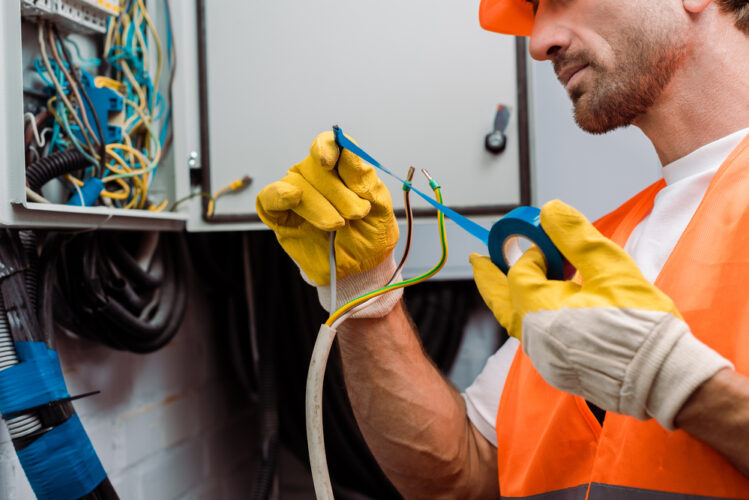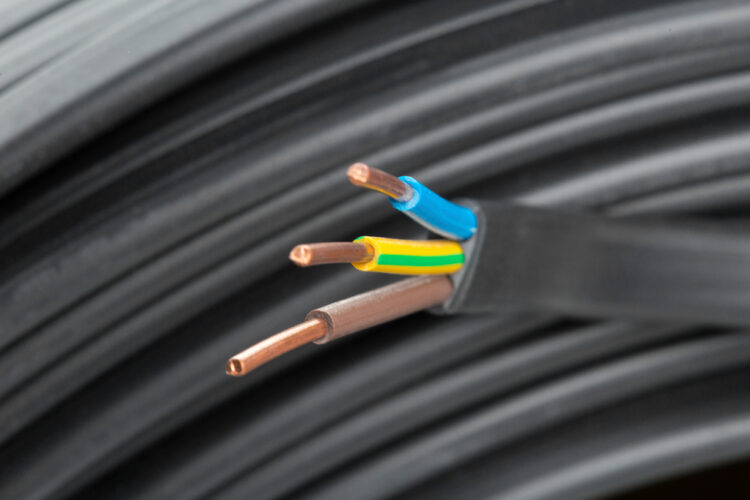12/2 and 14/2 are standard wire gauge models for lights and outlets. The choice depends on the wire’s intended purpose. The current amount the wire carries when in use also determines your choice.

My experience shopping for wire gauges for my light fixtures was quite eye-opening. My focus shifted to the wire gauge’s capabilities and characteristics. It allows you to choose the right fit for your home.
I’ll guide you through this seemingly complex process. To start with, comparing the different wire gauges helps. My focus will be mainly on the 12/2 and 14/2 since they are the most common home-use choices.
The two wires’ main differences are cost, amp limitation, and thickness. We’ll first look at the wires independently before comparing them.
The 14/2 Wire

Commonly known as the 14/2 jacketed cable, this wire comes with 14-gauge eclectic wires. The 14-gauge wire combination has three different electric wires serving specific purposes.
- The black is a hot wire. It is the primary carrier of electricity from the breaker panel to the switch’s light source.
- The white wire is another hot wire mainly known as the neutral. It manages all unused electricity by sending it back to the breaker panel.
- Green/ Bare Copper Ground wire is the grounding wire. Be sure never to use it as a neutral since it can easily cause injuries due to electric shocks.
The 2 in the 14/2 signifies the number of wires. This means that the 14/2 wires lack a grounding wire. These wires are excellent choices for outlets and lights in 15-amp circuit connections.
Choose the 14/2 wire for low-amperage light fixtures. They are not safe for high-amperage connections. I had to learn this hard when I connected the 14/2 gauge wires to 20-amp circuits, triggering malfunctions.
While the 14/2 wires are okay for light and outlet use, they are safer for lights. Some outlets may need higher amperage, which may not be compatible with the 14/2 wires. Typically, these wires can handle a maximum of 15-amp connection.
Anything beyond this limit is dangerous and illegal, as things could easily go wrong. In lucky cases, the breaker flips, and circuit interruptions occur.
This is the least perilous outcome. The contrary effect would be the breaker failing to convert. In such instances, the wire overheats and causes permanent damage or possible fires.
Always check the amperage of your breaker first before connecting any wires. Check the breaker box controlling unit for the exact measurements.
Open the box and find the specific breaker powering the outlet. There is a stamp with the amperage information on the breaker handle.
The 12/2 Wire

These are two current-carrying conductor electric wires. They contain white (Neutral) hot and black hot wires. Typically the 12/2 wire has a larger diameter than the 14/2 wires, with a difference of 2.5mm.
Do not use 12/2 wires for high voltage connections (not exceeding 30 volts). When using them for lighting, pair them with 15 A circuit breakers for excellent results.
The 12/2 wires are excellent for different types of light installation, including:
- Underwater lighting
- Outdoor Lighting
- General lighting that does not exceed 30 volts
The 12/2 are perfect for outdoor use because of their thickness and design. They can withstand harsh weather conditions such as sunlight, abrasion, and moisture. They can also withstand heat up to 140 degrees F.
You are less likely to worry about circuit overload thanks to the thickness and high quality. They have better conductivity compared to the 14/2 wires. As such, they create great connections between service panels and light fixtures.
Despite the better service and high versatility, the 12/2 wires are pricier than the 14/2 wires. You can be sure to get your money’s worth since these wires are more durable. Choose them for outdoor use or when you need wires that can accommodate more amperage.
The 12/2 wires make it possible to upgrade from the 15 amp circuit breakers to 20 amp breakers. The 14/2 wires may not allow for such transitions. Despite their differences, you can still use the 12/2 and 14/2 wires within the house.
Assign each wire to an appropriate circuit and create a clear plan. Calling a professional electrician to assist in this case is highly advisable. They have the skill and experience of dealing with different electric wires.
I attempted to connect the two wires back in my home and mixed things up. Thanks to the circuit breakers, I didn’t cause significant damage, but you may not be fortunate.
Difference Between 14/2 and 12/2 at a Glance

The best way to compare the two gauge wires is to look at a specific factor and see how the two compare for that factor.
Versatility
12/2 wire is more versatile than 14/2 wire. 14-gauge wires work with only 15 amp circuits, whereas 12/2 can accommodate 15 amp and 20 amp connections. 15 amp circuits allow a maximum of 8 receptacles for a single circuit, while 20 amp connections take up to 10.
The 12/2 gauge wire can accommodate heavy-duty appliances, including the vacuum cleaner. Be sure to connect your 12-gauge wiring to household appliances on 20-amp circuits. This guarantees sufficient power for all the machines.
Pricing
The 12/2 wire is more expensive than the 14/2 wire. It is of higher quality, more durable, and a better investment. You can use it for more appliances, while the 14/2 wires are best suited for simple lighting.
Durability
12/2 wires are more durable. The thick diameter strengthens them. This makes them better for outdoor use since they can withstand wear and tear.
Meeting Building Code Requirements
12/2 wires are better suited and compliant with the building codes. The codes direct homeowners to use 20 amp circuits in the bathroom and kitchen. However, the possibility of using 14/2 wires in a combination setup exists.
Loss of Current and Electric Conductivity
12/2 wires have better electric conductivity. They offer safer, more reliable, and more consistent connectivity than the 14/2 wires. Users get minor current loss between panels, appliances, and lights with 12/2 wires.
What Happens if You Mix 12/2 and 14/2 Wires?
It is possible to connect 14/2 and 12/2 wires around the house. Be cautious or have a professional electrician handle this, though. Ensure to keep the current limit at the small conductor’s capacity.
Let the limit be 15 amps since the smallest conductor is the 14/2 wire conductor. However, from experience, I’d suggest not mixing the two wires to avoid confusion. Establish what your building code states, as this could be a legal concern in case of inspections.
Readers Also Ask
How can you tell the difference between 12/2 and 14/2 wire?
Physically, the 12/2 wires are thicker in diameter than the 14/2 wires by 2.5mm.
What is 14/ 2 wire used for?
14-gauge wires are best used indoors for lighting. There is no dampness or excessive moisture indoors; hence 14/2 wire gauges work.
Should I use a 12 or 14-gauge wire?
The wire gauge you choose depends on the amperage of the outlets. 14/2 wires work with 15 amps or less, while 12/2 wires can accommodate 20 amps comfortably.